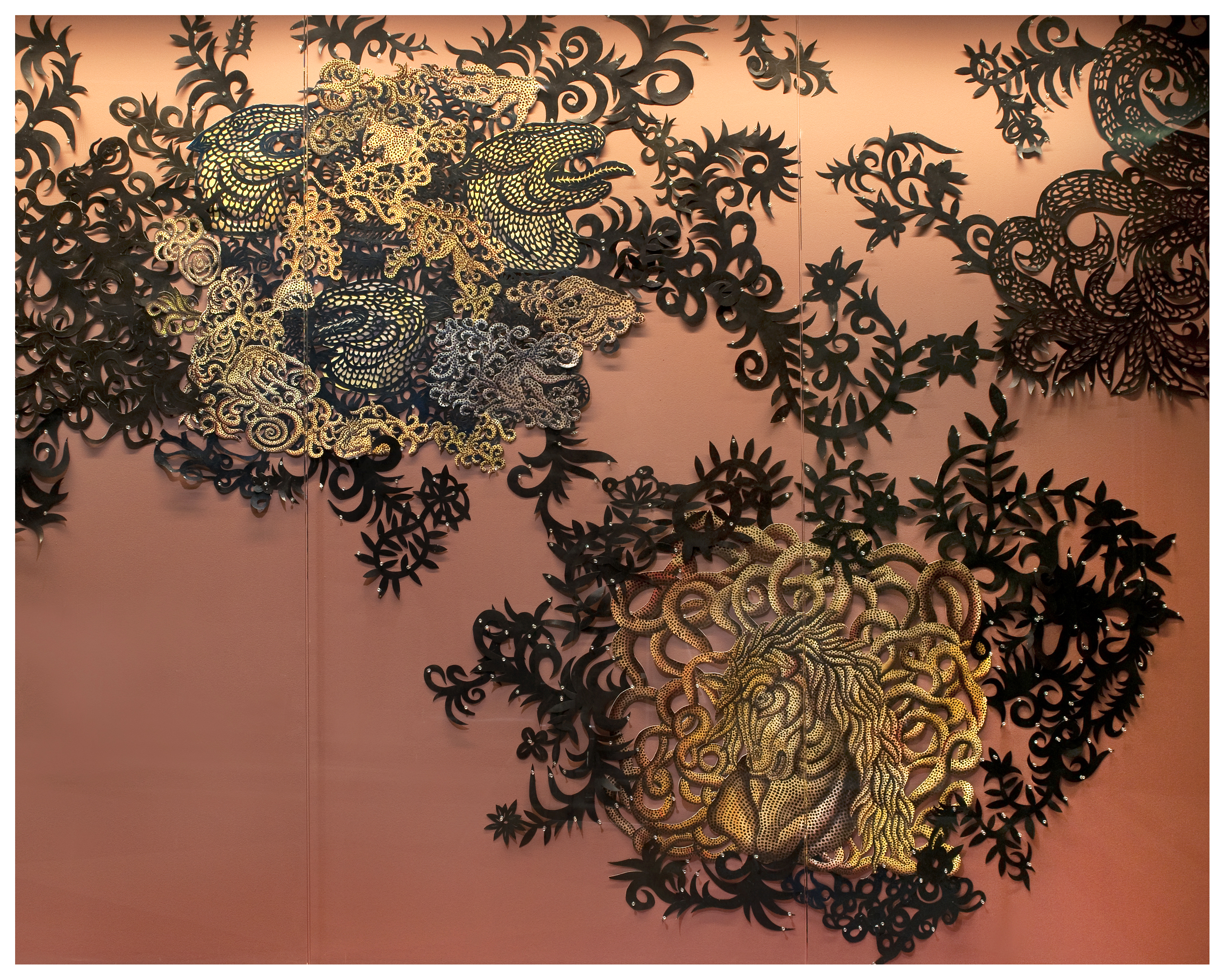PHL Airport's Airport Exhibitions Program is celebrating its 25th anniversary. Over the coming weeks, the airport will take a look back at some of the artists who have participated in the program over the last 25 years.
Name:
Henry Bermudez
Title/Background:
A contemporary Philadelphia artist born in Venezuela, known for merging myth and symbols in mixed media paintings, installations, and murals, Henry is the co-director of HOUSEGallery1816 in Philadelphia.
 PHL Installation:
PHL Installation:
2011, Terminal C - Baroque Landscape
Describe in general your artistic themes/subjects and the media that you work in.
My artistic theme/subject is a reflective vision of the places where I’ve lived and traveled to over years. My work has been nourished and influenced by Judeo Christian religious culture melded with the Latino history of my background. This can be seen by my use and reference of symbols and mythologies from ancient times.
My earliest influences came from my experience teaching in an Afro Caribbean community called Borbures within my country, Venezuela, where I learned about the influence of African culture in my country. Afterward I spent some years in Mexico studying Aztec mythology. Nature and her mythical dream imagery has also played a huge part in my iconography and through my experiences of living in the Amazon. My imagination developed an otherworldliness of constructed creatures – plant forms that have determined my visual identity. With this compendium of aesthetics, my art can transcend timelines and national boundaries.
I use various processes and mediums such as paint, glitter, cardboard, fabric, cut paper and ink and like to blend magical symbols with Western rationality, transcending timelines and national boundaries.
What did you exhibit at the airport and what inspired this particular body of work?
The installation that I did for the airport is called Baroque Landscape. It was a very challenging art piece and I felt overwhelmed by the dimensions of Terminal E’s oversized glass case. I had not one single art piece in my studio to fit this whole space, and little time to create a new one. My solution was to combine several finished pieces that had a similar narration. The layout was finalized during the installation process. Luckily, everything fit in the right place, and I created a composition that successfully filled out the whole case. Since then, I learned the practicality of using modular imagery in my compositions.
What was it like exhibiting at the airport compared to where you usually display your work?
This opportunity gave me new ways of installing and exhibiting my work. I had never made work of that size and its modularity provided flexibility and creative options. It motivated me to think about what imagery worked better together to create one whole new piece from combining others. I now love working large – I experience the creative process differently when its size encompasses me. The Philadelphia International Airport piece was the largest of my career.
What impact, if any, did the PHL opportunity have on your future work/career?
My work's exposure to thousands of viewers was incredible. Of course, due to the TSA security, I couldn’t meet these travelers and see their responses, though some of them reached out to me with congratulations.
I remember that as we were installing the piece, there were many people in the airport who stopped by to ask questions and comment on it. They were so interested in the installation process.
There have been certain periods in my career that seem to have influenced me greatly, marked by “before” and “after” moments - before Mexico and after Mexico was such a time as my art changed significantly from that living experience. And now I would say that there is a before the airport and after the airport, as well, since I learned a different way of composition driven by the scale of this installation.






